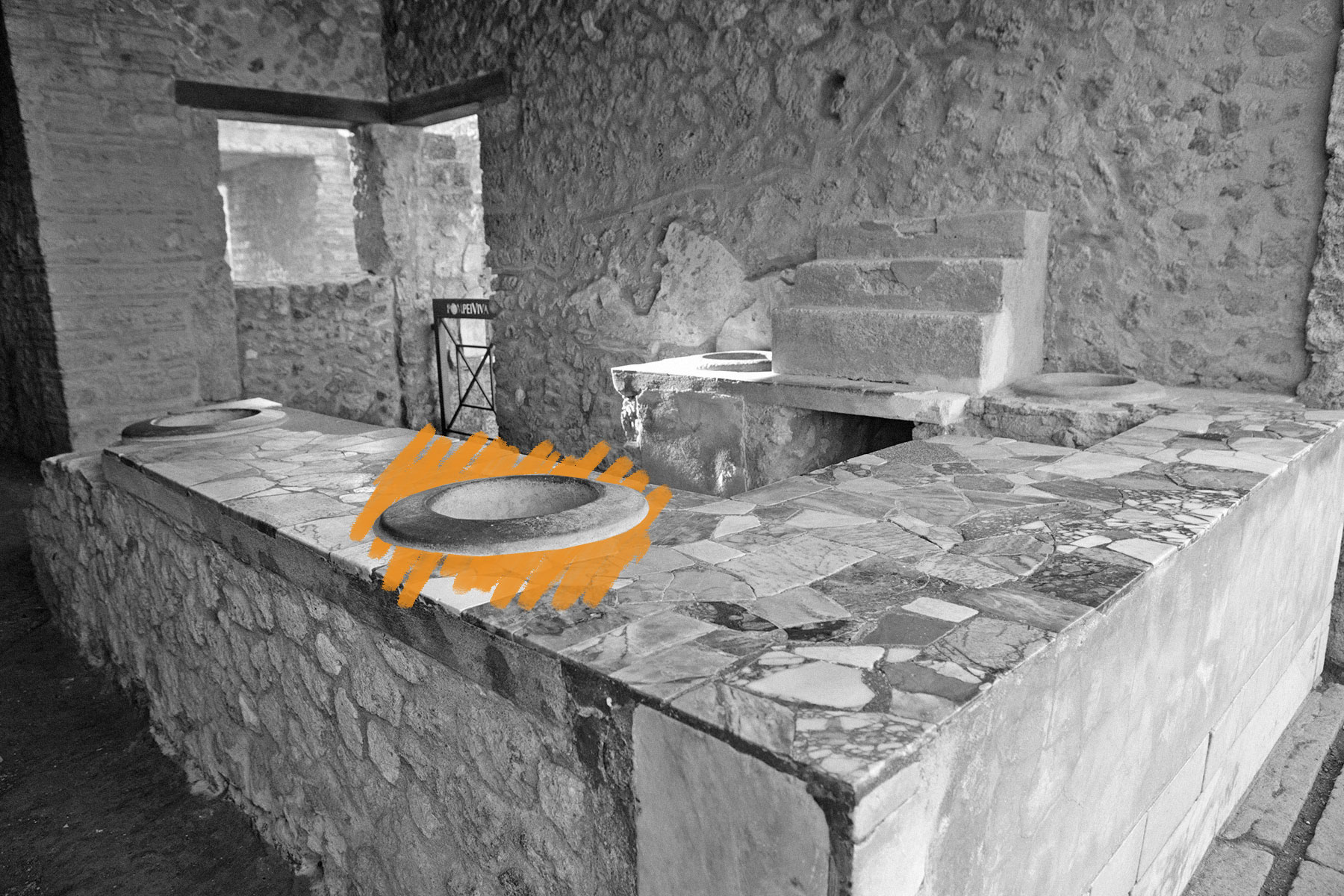 |
The Romans had a version of fast-food restaurants. |
World History |
 |
| |
| Thermopolia were low-cost food joints, offering a selection of meats (such as chicken, pork, duck, goat, and snails), cheeses, fish, bread, and legumes, washed down with calida (a type of mulled wine) — there were no burgers or fries here. The food was held in dolia (large terracotta pots) on buffet-style counters. The more upscale restaurants had frescoes adorning the walls, depicting food that was eaten there (such as ducks or chickens) or deities (such as Mercury, the god of commerce, and Bacchus, the god of wine). Thermopolia weren't without controversy, however. Roman Emperor Claudius once tried to have them shut down because of their poor reputation. Criminals, thieves, and other dishonorable members of society often gathered and drank wine at thermopolia, earning the establishments a bad rap. | |
 | |
 | |||||||||
By the Numbers | |||||||||
| |||||||||
| |||||||||
 | |||||||||
| |||||||||
Ancient Romans put cabbage juice in their ears for healing purposes. | |||||||||
| Cabbage was considered a miracle drug in ancient Rome. Statesman Cato the Elder championed the leafy crop in his work "De Agri Cultura," in which he wrote extensively about farming, agriculture, and cabbage, proclaiming that its medicinal value "surpasses all other vegetables." Cato dedicated an entire section to cabbage, and one of his most outlandish claims was that it could reduce hearing loss or treat deafness. He explained, "In case of deafness, macerate cabbage with wine, press out the juice, and instil warm water into the ear, and you will soon know that your hearing is improved." Although cabbage is rich in vitamins and minerals, it is doubtful that it improved anyone's hearing. Cato also outlined many other questionable cabbage remedies, asserting that it could heal all sores without pain and cure a swollen spleen, a painful heart, and "all the internal organs which are suffering." | |||||||||
 | |||
Recommended Reading | |||
 | |||
| | |||
 | |||
| | |||
| + Load more | |||
| |||
| |||||||||
| Copyright © 2023 History Facts. All rights reserved. | |||||||||
| 700 N Colorado Blvd, #513, Denver, CO 80206 | |||||||||
|





No comments:
Post a Comment